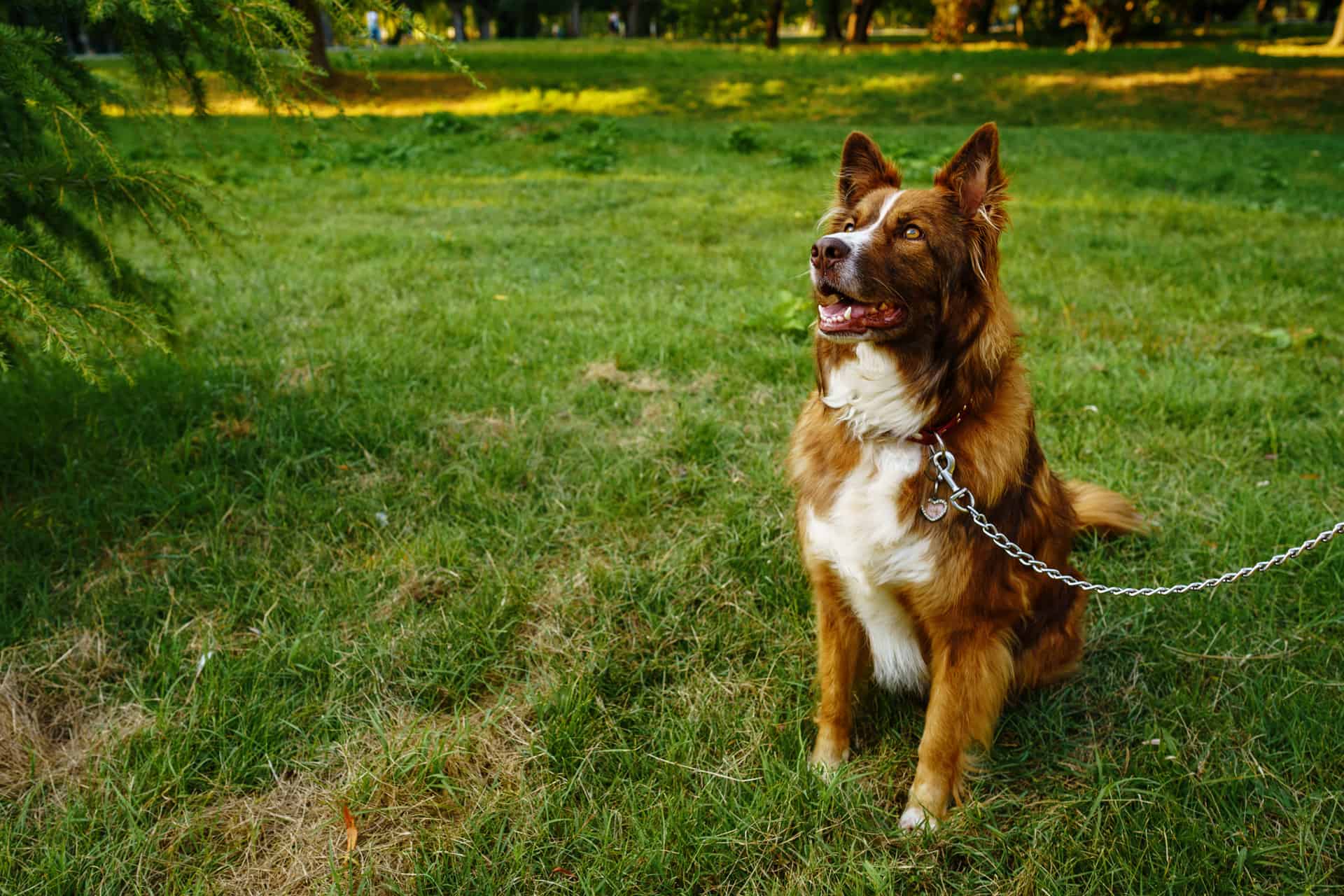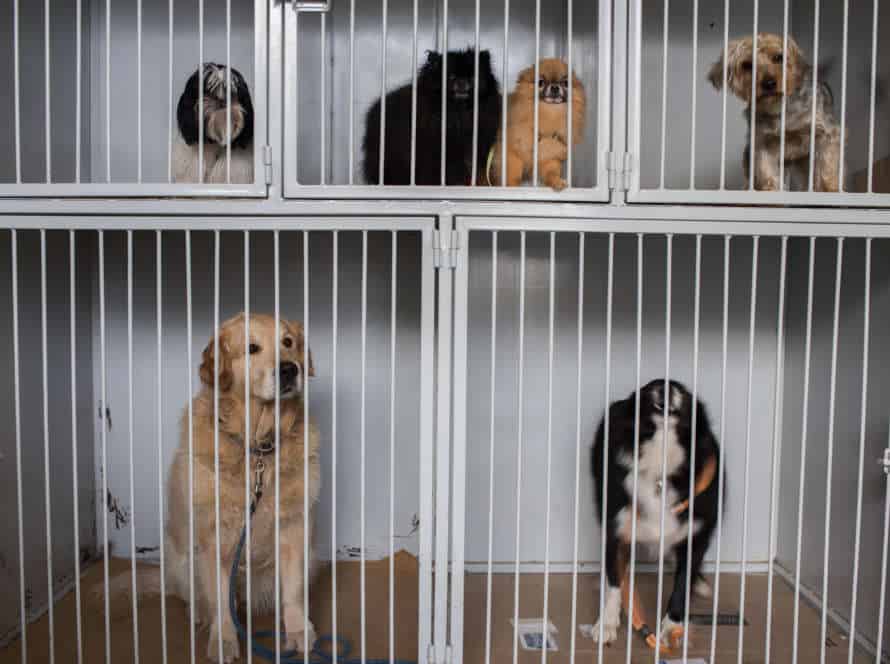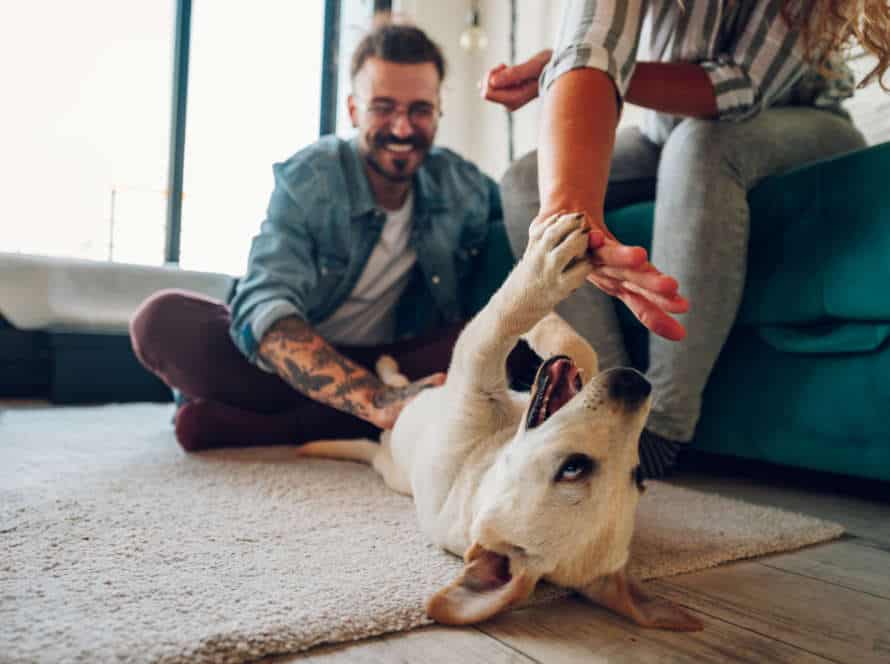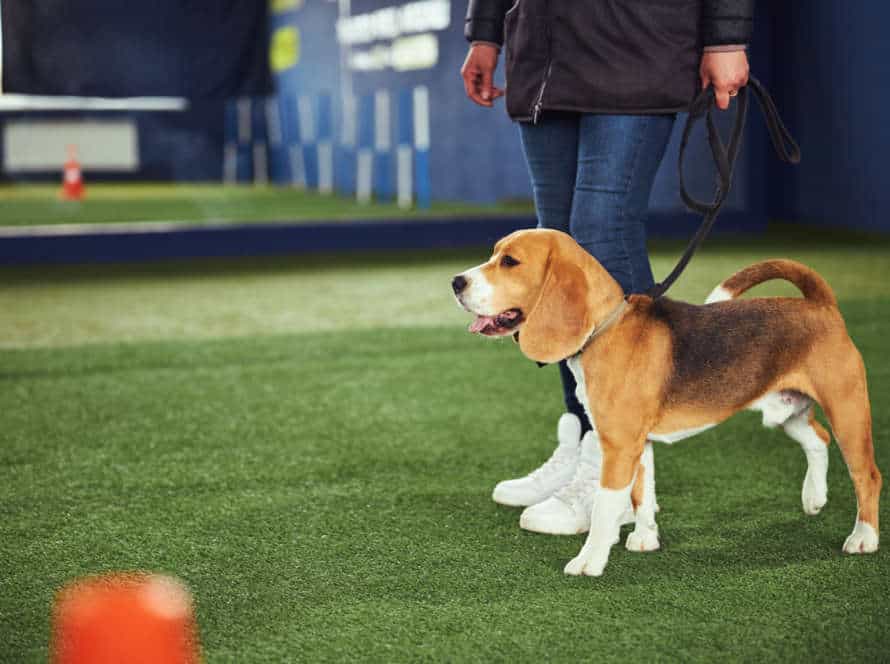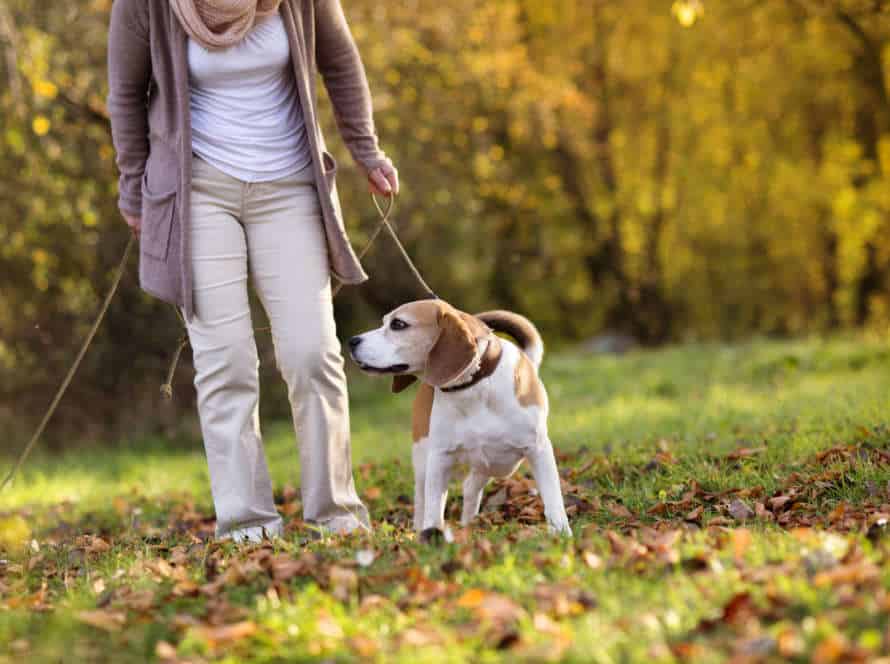The Importance of Consistency and Patience in Leash Training Success
Leash training is a must for a good bond between a dog and its owner. But, for success, it must be consistent and patient.
Consistent means the same commands, techniques, and rewards each time you take your pup for a stroll. This helps them understand what is wanted and what’s okay.
Patience is necessary, as leash training is a gradual process. Dogs need time and practice to be okay with a leash, especially if they are pups or rescues. With patience, the owner can help the pup to gain confidence and make progress.
Skipping or rushing training, changing methods, or losing patience can cause setbacks and confusion for the dog. Stick to a plan and give the pup time to learn and adjust.
Pro tip: Positive reinforcement training can help, like treats or praise. It rewards good behavior and motivates the pup to learn.
Consistency in Leash Training
Leash training your pup can be tricky, but the rewards are worth it! To be successful, you have to be consistent and patient.
These two elements are essential for learning effectively and making the experience more enjoyable. Let’s look closer at the role of consistency and patience in leash training.
Why is consistency important in leash training?
Consistency is key in leash training. Routine and cues help dogs understand what’s expected of them. Being consistent helps you communicate with your pup and encourages good behavior.
Here’s why consistency is important:
- Clear communication – Dogs learn through repetition and association. When you cue a behavior and reward it, your pup understands.
- Reduce confusion – Inconsistency confuses and makes them anxious. This can cause bad behaviors like pulling, barking and sniffing.
- Build trust – Consistency and patience show trustworthiness. This helps your pup relax and feel safe.
Remember, leash training takes time and patience. Being consistent and patient helps you teach good leash manners and create a strong bond.
Tips for maintaining consistency in leash training
Consistency is key for successful leash training. Here’s how to do it:
- Set clear goals. Decide what to reinforce or correct.
- Be consistent with verbal commands. Use the same phrases and words every time.
- Keep a steady walking pace. Let the dog know what to expect.
- Reward always. Use the same treats or praise.
- Patience is a must. Training takes time. Stay calm.
By consistently following these tips, you’ll help your dog learn good behaviors quickly and safely.
Common mistakes to avoid in leash training due to lack of consistency
Avoiding inconsistency is key when leash training your pup. Dogs learn best through repetition and consistent training. Here are some tips to keep in mind:
- Always use the same commands and techniques.
- Take it slow, start with short, positive sessions and gradually increase both duration and difficulty.
- Reward good behavior with the same treats or praise each time.
- Never reward bad behavior, like pulling or jumping.
- Be patient and don’t rush the process – consistency, repetition and patience are key.
Pro Tip: Struggling with leash training or consistency? Enroll your pup in a professional training program or talk to a reputable dog trainer. They can provide tailored guidance and support for your pup’s specific needs and behaviors.
Patience in Leash Training
Patience is essential when leash training your pup. Consistency is the key to success! Don’t expect too much, too soon. Stick to a routine and you’ll get the most out of your training. Here’s why patience and consistency are so important in the leash training process.
Why is patience important in leash training?
Leash training is a must for pet owners who want to take their furry friends out for walks. However, it requires patience and consistency. Rushing the training can be confusing and anxious for your pet, making patience essential.
Leash training includes your dog being comfortable with the leash and how to walk without pulling or dragging. This process may take longer for some breeds, depending on their characteristics. So pet owners, be patient when training your pets. Discouragement and frustration will only complicate things.
Consistency is also important. Create a routine, stay calm and use positive reinforcement methods, such as giving treats, praise and attention when they obey commands or act well during walks. Remember, consistency and patience are the keys to success in leash training your furry friend.
Tips for cultivating patience in leash training
Cultivating patience is key for leash training your pooch. Without it, you may get exasperated and find it difficult to persevere with consistent training, which is so important for leash training success.
Here are a few tips for cultivating patience in leash training:
- Start small: Begin by training your pup in a quiet, familiar spot with few distractions. This will help you and your pet focus better, making the training process much easier.
- Be regular: Leash training needs repetition to be effective. Set up a regular training routine to develop good leash manners in your furry pal.
- Reward good behavior: Dogs learn through positive reinforcement. When your dog responds well to leash training, reward them with delicious treats and lots of positive attention.
- Take timeouts: If you’re feeling frustrated or overwhelmed, take a breather to clear your head. A calm and tranquil attitude will help your pup stay in control too.
By following these tips for cultivating patience in leash training, you can have a safe, enjoyable and successful training experience for you and your pup.
Common mistakes to avoid in leash training due to impatience
Leash training is an important part of pet care. But, it takes time and persistence. If you’re impatient, you may commit some mistakes which can slow progress. Here are some of the things to look out for:
- Pulling the Leash: Don’t pull or chase your pet. This signals to them that the leash is a game.
- Using Leash as Punishment: Don’t use the leash to punish your pet. It can cause fear and stress.
- Neglecting Positive Reinforcement: Don’t forget about positive reinforcement! Reward good behavior with treats, toys, or decorations.
- Skipping Consistency: Consistency is key. Have clear expectations and stick to them.
- Rushing the Training Process: Leash training should be done gradually. Give your pet enough time and focus on them.
Pro Tip: Exercise patience and these common mistakes will be avoided. Give your pet the love, patience and training they need for success.
Setting Goals and Measuring Progress
Consistency and patience are musts for successful leash training of pets. So, set goals to see progress, and track your own progress too. This will keep you motivated. It will also help you adjust your strategy as needed.
Let’s look at why setting goals and measuring progress is important.
Why is setting goals important in leash training?
Goals are key when training your pup. They give you purpose and direction. Be clear and realistic. Consistently work towards these goals, adjust as needed, and success will follow. With a plan and clear goals, you can make your pup an enjoyable walking companion! Pro tip: Reward each milestone with your pup to keep them motivated.
How to set effective leash training goals
Before you leash train your pup, set realistic and effective goals. Here are some tips to aid you:
- Be exact about what you wish to reach.
- Break up your big goal into smaller parts.
- Make a doable plan that states how you’ll reach these goals.
- Set a timeline for when you want to complete each goal and keep an eye on your progress.
Moreover, remain consistent and patient in this training. Patience is crucial to success since leash training should be done step-by-step to get the desired behavior. Consistency is important to back up good behaviors during the training. With the right goals and consistent training, you can have a well-trained, happy dog.
Tips for measuring progress and celebrating success
When training a dog, consistency and patience are essential. Here are some tips to help you measure progress and celebrate successes:
- Set goals: Think about your dog’s breed, age and temperament. Decide on realistic, achievable goals and break them down into smaller ones.
- Keep a record: Note each training session’s duration and outcomes. Record new behaviors your dog has learned.
- Take photos: Take before and after pictures to see the progress.
- Appreciate small successes: Reward each small success, like responding to a new command or walking on a leash. This will keep you motivated.
Leash training is a process. Celebrate each step and work towards the larger goals.
Common Challenges in Leash Training
Leash training your pet? It can be tricky! Patience and consistency are keys for success. Some pooches learn quickly but others take a bit longer. Let’s look at common issues which could come up during the leash training process.
Pulling on the Leash
Want to train your dog not to pull on the leash? Consistency and patience are key. Here are some tips:
- Start small – a few minutes at a time. Gradually increase the distance.
- Harnesses and head collars can help control your pup.
- Reward good behavior with treats or praise.
- No punishment! That can worsen the behavior.
- Be consistent, and give it time. Leash training is a rewarding experience for both of you!
Distractions During Walks
Leash training pets can be tricky, especially when it comes to distractions during walks. Your pet may pull hard on the leash, get over-excited or stop to chase something. Here’s what you can do:
- Train indoors first.
- Use a short leash.
- Go for walks at quieter times.
- Bring treats or toys.
- Be patient and consistent when training.
With practice and patience, leash training can be an enjoyable experience for both you and your pet.
Fear or Anxiety on the Leash
Many pooches may feel fearful or anxious when first introduced to the leash. Patience and consistency are key to overcoming these challenges and succeeding with leash training. Here are some tips to assist:
- Short, low-stress walks to start, then gradually increase distance and duration.
- Reward great behavior with positive reinforcement techniques.
- Make sure the collar, harness and leash fit properly for comfort and safety.
- Be consistent with approach and training.
- Watch for signs of distress, like panting, pacing and pulling. Adjust training if so.
Leash training takes time and patience. But with consistency and positivity, help your dog conquer anxiety and enjoy walks on the leash!
Additional Techniques for Successful Leash Training
Leash training takes consistency and patience. When you clip the leash, your dog should know it’s time to walk! Stick to a plan. Reward them for good behavior. There are also more tactics to help leash training be successful.
Positive Reinforcement Techniques
Positive reinforcement is key for successful leash training. These motivators can encourage good behavior and help your dog be happy and confident. Here are additional techniques to keep in mind:
- Avoid punishment-based methods and tools like choke or pinch collars.
- Start training in a calm place with fewer distractions.
- Use high-value treats to reward good behavior – like when they walk beside you without pulling.
- Leash training needs patience and consistency. Give your dog time to learn and make mistakes without feeling like they failed.
- Be consistent with training and use positive reinforcement techniques to give your pup the guidance and support to learn leash walking.
Redirection Techniques
Redirection techniques are key for successful leash training. They stop your pup from doing bad behaviors when he’s distracted.
Try these:
- Treats: Distract him with treats when he’s bothered by loud noises or other animals. Reward him when he pays attention to you.
- Toys: Carry a toy or ball to get his focus away from distractions.
- Verbal Cues: Say “sit” or “stay” when he’s distracted. This will keep him focused during walks.
Be consistent and patient when using redirection techniques. With positive reinforcement and consistency, your pup will have a great leash training experience.
Socialization Techniques
Socializing is a must when training your pup. These techniques can help you teach your pup to stay calm on their leash.
Exposure: Get your pup used to the world with sights, sounds, and smells.
Desensitization: Increase how intense the stimuli are gradually, to help your pup better manage triggers like strangers, cars, and other dogs.
Distraction: Use toys and games to keep your pup’s attention away from distractions, so they focus on you.
Positive Reinforcement: Reward your pup with treats, praise, and belly rubs when they behave well. This eliminates fear, and increases their desire to learn.
The right technique varies from pup to pup, so it’s important to figure out which works best. Leash training takes time and patience. Remember, no punishment or yelling! Keep it calm.
Troubleshooting Leash Training Issues
Training your pup on a leash? Complex task! Need the right tools and techniques. Owners, remember this: Consistency and patience are top priority! Here, we will talk about how to tackle the commonest leash-walking problems.
Identifying the Root Cause of Issues
Identifying the root of leash training issues is vital. Every pup is special and may need different training, but some root causes are universal. Such reasons can be: no consistency in teaching, not enough patience, leash reactivity, or issues with socializing.
To find the source, observe the pup and consult an expert. Then you can tailor the approach to make the training stronger.
Keep in mind, leash training takes patience, consistency, and some time. Reward nice behavior, make sure your pup is socialized, and get help from experts when needed.
Strategies for Addressing Common Issues
Leash training can be hard for pet owners. It can cause issues such as pulling, leash aggression, and lack of focus. For success, consistency and patience are musts! Here are some strategies to help with common issues:
- Pulling: When your pet pulls, stop & wait. Reward them when they’re by your side. Gradually increase the distance & continue rewarding.
- Leash Aggression: Expose your pet to other dogs/people at a distance & reward good behaviour. Over time, decrease the distance.
- Lack of Focus: Use quiet & calm environments for training. Treats can help encourage focus. Keep sessions short to prevent boredom.
Leash training takes time, consistency & patience. With these strategies & a positive attitude, success can be yours!
When to Seek Professional Help.
Leash training your pup can be tough, but with patience and consistency you can make big improvements. In some cases though, help from an expert is the best way forward.
If your dog is growling or lunging while on a leash, professional help is essential. A trainer or behaviorist can find the cause of this behavior and show you how to tackle it.
In addition, if your pup is scared or anxious when on the leash, seeking help is recommended. They can guide and support you so your furry friend feels more comfortable on walks with you.
Pro Tip: Remember that training needs patience, consistency, and lots of positive reinforcement. Don’t be disheartened if progress is slow, and seek help when needed.
Frequently Asked Questions
1) Why is consistency important in leash training?
Consistency is crucial in leash training because dogs thrive on routine and repetition. By using the same commands and techniques consistently, your dog will learn to associate them with the desired behavior.
2) How can patience help in leash training?
Patience is essential in leash training because it takes time and practice for your dog to learn new behaviors. Getting frustrated or losing your temper can set back your progress and damage the trust and bond you have with your dog.
3) How long does it take to leash train a dog?
The time it takes to leash train a dog varies depending on the individual dog and the consistency and patience of the trainer. Some dogs may pick up leash training quickly, while others may take weeks or even months to fully master it.
4) What are some common leash training mistakes to avoid?
Some common leash training mistakes include using inconsistent commands, yanking or pulling on the leash, allowing your dog to pull ahead or lag behind, and not rewarding good behavior. Avoiding these mistakes will help your dog learn proper leash behavior more quickly and effectively.
5) Can professional trainers help with leash training?
Yes, professional trainers can be a valuable resource for leash training. They have experience and knowledge in training techniques and can provide guidance and support for both you and your dog.
6) What are some benefits of successful leash training?
Successful leash training can lead to a safer and more enjoyable walking experience for you and your dog. It can also strengthen the bond and communication between you and your dog, and improve your dog’s overall obedience and behavior.

